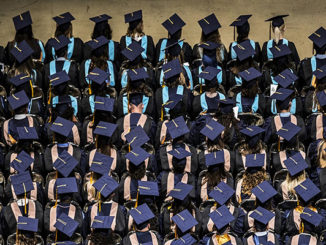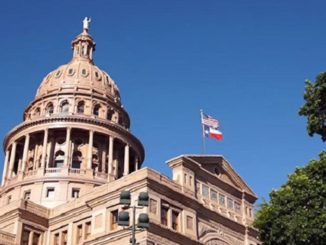
A hard-earned milestone representing a boost in reading levels for thousands of students of color is in jeopardy—even before getting the attention that it deserves.
Back in April, the bipartisan, nonprofit Collaborative for Student Success shared the good news that since 2015, across 18 states that raised expectations, 262,968 more students of color were reading at grade level. The analysis focused on the 2015-2018 school years in grades three through eight for states that maintained high academic standards and aligned assessments.
That’s 262,968 more students of color better prepared for the workforce.
That’s 262,968 more students of color reading on grade-level in a decade when academic standards were higher and tests harder than ever before.
That’s 262,968 more students of color ready for a more fulfilling life.
If 262,968 more children of color were provided a life-changing opportunity in another arena of American life, that would rightfully make front-page news.
This did not.
The year has observed several front-page education stories. We learned about dozens of students’ families who cheated to access elite colleges, educators in a handful of states who stormed-the-capital to attain overdue teacher salary increases, and the merits of free-college-for-all.
But the 262,968 story could be more historically significant. Akin to the first consumer space travel launch, the curing of an AIDS patient, and the first woman to win the prestigious mathematics’ Abel Prize. It represents a fundamental shift in what is possible.
Within these major 2019 stories were once hard-to-fathom milestones that took decades of research, hard work and political resolve to achieve. The 262,968 moment is the same—it should signal all that is possible when we demonstrate courage. It might also signal the high point before we regressed.
It was achieved via work done in a bipartisan manner over a multi-decade period. There was general consensus that our education system’s low expectations represented a major threat to our nation’s fate. The Obama administration’s efforts built upon the foundation established during the Bush and Clinton eras.
In the states there were leaders such as Delaware Gov. Jack Markell, a Democrat. When I served under him for six years, he would travel the state to tout the need to “raise the hoop from eight feet to ten feet.” Markell’s Republican “First to the Top” comrade in Tennessee, former Gov. Bill Haslam, pursued similar missions to make America’s students more globally competitive. When I later served under New Mexico’s Susana Martinez, the country’s first female Hispanic Governor, she too put aside partisanship and answered the call for an education “moonshot” expressed by Education Secretary Arne Duncan in 2010.
Across the 18 states that persisted, New Mexico’s reading progress with Native American students was unprecedented—up 8.1 percentage points. California’s Hispanic students made similar progress, up 8.2 percentage points. New Jersey’s results were extraordinary. Because of efforts by legislators and executives at the state and city levels, reading is up 10.9 percentage points for Hispanic students and 9.5 percentage points for African-American students.
It took five steady years (2010-2015) in places like New Jersey just to invest in the infrastructure necessary to enable this. Policymakers, educators and families bravely adapted to major culture changes in what we teach, how we teach, and the higher bar in how we measure the outcomes of that instruction.
Now, several of the same 18 states that achieved gains have—or are in the process of—dropping their academic standards and changing their tests, hence lowering or camouflaging expectations. If they are allowed to move forward, we will likely see artificial “gains” coupled with inflated graduation rates in the years ahead. Herculean efforts to close the “honesty gap” would be wiped away.
This is not to say that there isn’t critical work in the decade ahead to make our tests more authentic—to capture additional real-world indicators such as creativity and collaboration. And yes, this is all in service of 21st century career preparation, lifetime earnings, and lives of purpose. But each of these aims will invariably be predicated upon student literacy. It remains a civil rights issue and a workforce development issue.
The 262,968 milestone for our country should be celebrated as part of the decade where we fiercely combatted the injustice of illiteracy. We should continue this fight, recognizing that backsliding on expectations is economic and societal life-and-death for our students of color.
To catalyze this requires some attention be paid to it. The 262,968 is worthy of coverage in the history books, but first it should make the front-page.



